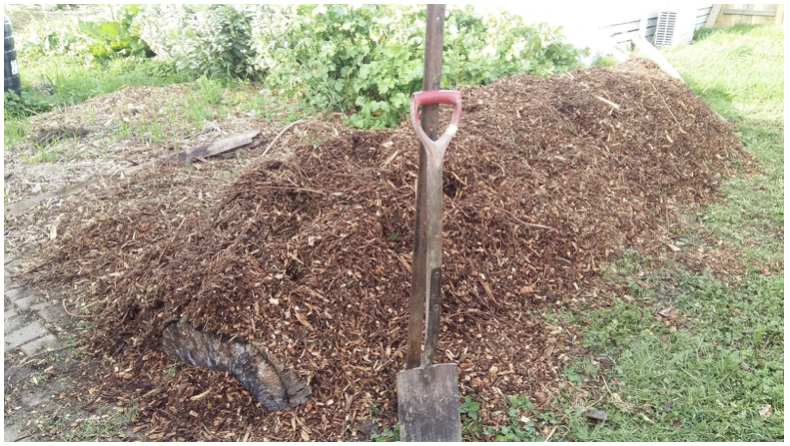|
By Leila Macbeth I’m preparing my beds in June so they're ready for me to plant cucurbita in early summer.
I'll grow three species so they don't cross. The cucurbitaceae family are very heavy feeders, and heavy drinkers too- they love loads of compost, especially for its fabulous moisture-holding qualities. Most plant families just need a light side-dressing of compost, but this lot love being planted or sown directly into it, and they’re very happy if it’s not totally broken down. How I compost I like building windrows-long free standing compost heaps-where new beds will be. Composting in place= less work for me, and not disturbing the compost critters by turning and moving. Heat The heat in compost is created by bazillions of microorganisms eating, respiring and reproducing. While cold compost is fine -I make it all the time- hot compost is usually richer in substances that promote plant growth and health. To get compost properly hot, it needs a minimum volume of 1 metre cubed. The windrow I am building is way under that, so I expect it to get only moderately warm. Water Adding lots of water while building the compost heap is vital- the microorganisms need plenty, and once they start creating heat they need even more. Building a compost heap in winter works well as I can usually rely on the winter rains to help keep the heap adequately watered. Air Keeping my compost heaps aerobic is essential. While composting systems like bokashi are designed to be anaerobic, most anaerobic bacteria are pathogenic and not good in a compost heap. Basically if compost smells bad, it’s probably anaerobic. The usual way to keep compost from going anaerobic is to turn it multiple times but I make hot, aerobic compost that’s also static, that is...no turning-see my description below under ‘Keeping it aerobic’. Building the pile Nitrogen-rich and carbon-rich materials are the basic building blocks for a compost pile, and while the microorganisms need a C:N balance, it’s unimportant what the actual ingredients are-you could make great compost using just two basic ingredients: grass clippings (nitrogen) and shredded cardboard (carbon). Building a hot pile requires a big pile of ingredients all at once-carbon things can be stockpiled, but the nitrogen ingredients are often fresh, and need using fast before going anaerobic. The key is air, water, and if possible, lots of time to mature- my current static hot compost pile is over a year old, and still improving. My ingredients
I make extremely ‘lazy’ compost-while ripping up the paper etc would make the compost work much faster, I’m not in a hurry! I just roughly layer everything, alternating high nitrogen and carbon, and water heavily between layers. Keeping it aerobic It’s all about creating and maintaining airflow. I use a waratah, but anything heavy and pointy with a decent diameter will do it I just stab the waratah through til I can feel I’ve hit the ground, work it around a bit to widen the air channel, and repeat at approx 40cm intervals. Stuff will fall into the holes but that’s fine. In a couple of weeks I’ll poke holes in other areas to make sure I don’t get anaerobic spots. When I’m ready to plant I won’t disturb things much-I’ll basically just plant directly into what will by then just be a very well-composted raised bed. Leila’s nerdy corner For a really flash static, hot, aerobic compost setup-meet the Johnson-Su bioreactor. One day I will make one. Or two… https://regenerationinternational.org/bioreactor/
1 Comment
19/11/2021 01:07:01 am
Planting is like raising kids. You have to check on them, their growth. When they grow into a tree, you have to prune and trim them as part of their development. - EJ
Reply
Leave a Reply. |



 RSS Feed
RSS Feed